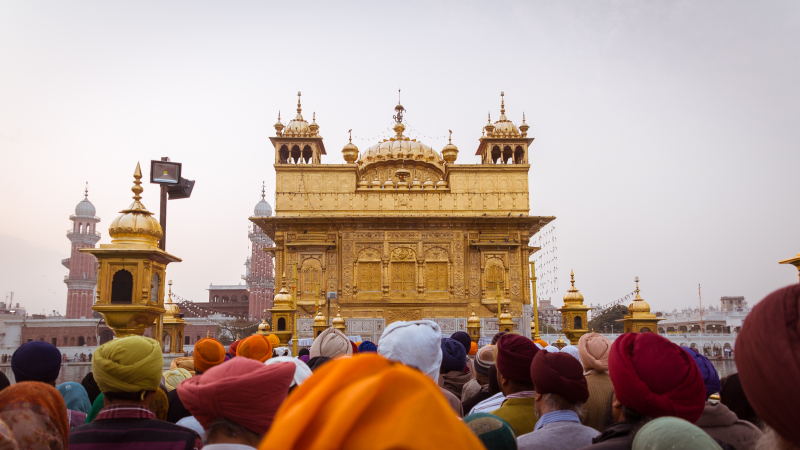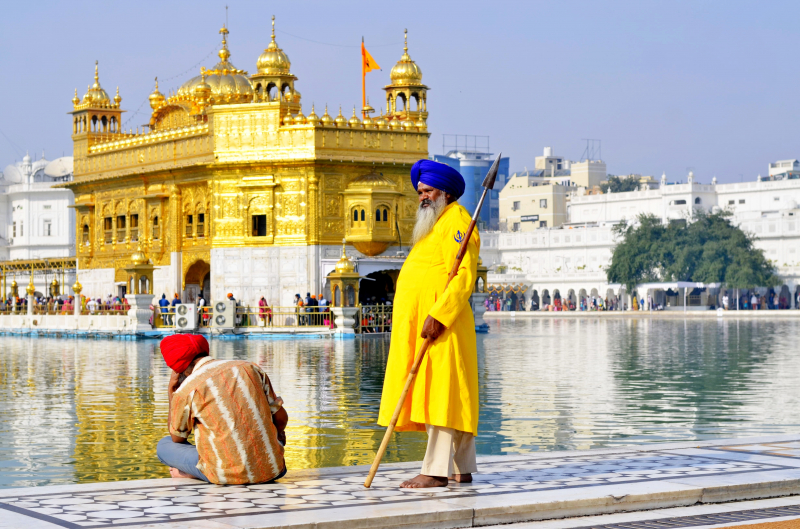There are 10 Gurus in Sikhism
Guru Nanak (1469–1538) was the founder of Sikhism and the first of the human Sikh gurus. Guru Nanak was attracted by religion even as a child, and his ambition to discover the secrets of life finally prompted him to abandon home. He traveled around India in the style of Hindu saints. Guru Nanak met Kabir (1441–1518), a saint respected by both Hindus and Muslims, during this time period. He conducted four big voyages, known as Udasis, that spanned thousands of kilometers.
Guru Nanak picked his disciple Bhai Lehna as his successor to the guruship rather than his son in 1538. Bhai Lehna was called Guru Angad and became the second guru of Sikhism. He carried on the task begun by Guru Nanak. At the age of 73, Guru Amar Das became the third Sikh guru in 1552.
During Guru Amar Das's guruship, Goindwal became a major Sikhism center. He persisted in preaching the principle of gender equality, the ban on Sati, and the practice of Langar. In 1567, Emperor Akbar sat down at Langar with the common and poor people of Punjab.
To oversee the religion's rapid expansion, Guru Amar Das also taught 140 apostles, 52 of whom were women. He appointed his son-in-law, Jetha, as the fourth Sikh Guru before his death in 1574 at the age of 95. Jetha took on the role of Guru Ram Das and worked hard to fulfill his responsibilities as the new guru. He is responsible for the establishment of Ramdaspur, which was later renamed Amritsar.
Guru Arjan, the youngest son of the fourth Guru, became the fifth Guru of the Sikhs in 1581. He was in charge of the construction of the Golden Temple as well as the Sikh sacred scripture and his personal insertion of over 2,000 hymns to the Guru Granth Sahib.
In 1604, he established the Adi Granth as the Holy Book of Sikhs for the first time. In 1606, he was imprisoned and fined an exorbitant sum by the newly established Mughal Emperor Jahangir, which he refused to pay. His disciples and a highly regarded friend, Sufi Sant Hazrat Mian Mir, attempted to intervene on his behalf, but believing he had done nothing to justify the fine, he told them he did not want anyone interfering with Waheguru's workings.
He was also urged to change some of the former Gurus' words that he had collected in the Adi Granth, which he refused. He was severely tormented before being permitted to bathe in a nearby river. His followers and admirers watched as he proceeded to the river's edge on his terribly burned and blistered feet, waded in, and then vanished beneath the water, never to be seen again, becoming the Sikhs first martyr.
Guru Hargobind was the sixth guru of the Sikhs. He carried two swords, one for spiritual and one for temporal (worldly) reasons. From that moment forward, the Sikhs became a military force with a trained combat force to protect their freedom.
Guru Har Rai was appointed Guru in 1644, followed by Guru Har Krishan, the boy Guru, in 1661. Guru Teg Bahadur became Guru in 1665 and led the Sikhs until 1675, when he sacrificed his life in defense of Kashmiri Hindus who had gone to him for assistance.
In 1675, Aurangzeb ordered the public execution of Guru Tegh Bahadur, the ninth Sikh Guru. According to Sikh mythology, Guru Tegh Bahadur sacrificed himself to preserve Hindus after Kashmiri pandits sought his assistance after the Emperor sentenced them to death for refusing to convert to Islam. This was a watershed moment in the history of Sikhism. His successor, Guru Gobind Singh, the last of the human Sikh Gurus, militarized his disciples even more.
After the treachery of his neighboring hill chieftains (Katri Rajputs, who he had expected to join him in expelling or at least putting an end to Mughal tyranny and forced conversions of Hindus), who took the side of the Mughals and tricked him and the Sikhs, under a guarantee of safe passage, into abandoning Anandpur, many of his Sikhs, including his four sons and his mother, Gobind Singh, reached safety.
Shortly before his death, Guru Gobind Singh directed that the Sikh Holy Scripture, Guru Granth Sahib, replace the line of human Gurus and become the spiritual authority for the Sikhs, while the Khalsa Panth, or the Sikhs themselves, would be the temporal authority.
The Guru Granth Sahib is unique among sacred books in that it is written in Gurmukhi script yet contains multiple languages, including Punjabi, Hindi-Urdu, Sanskrit, Bhojpuri, and Persian. Sikhs consider the Guru Granth Sahib to be the final and only living guru.











